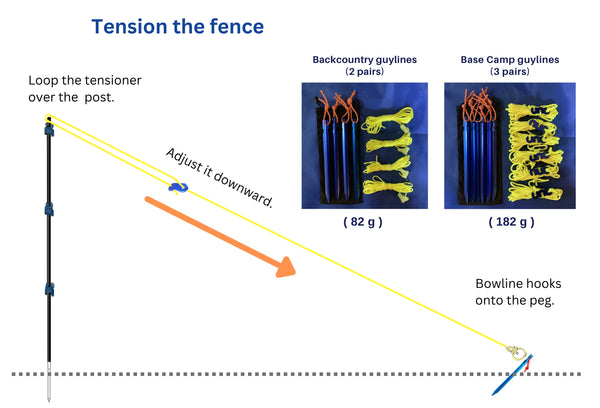How do I know if the fence is working properly?
It’s about proper set up and maintenance.
1. Optimal voltage. This is the electrical “pressure” in the fence that enables a connection with a bear. Use your voltage tester to see if dry conditions are lowering that potential (we explain here). You may have to water the ground stake and maybe the area outside where a bear would stand.

2. Current fault. Look for any “short-circuit” where energy is being rerouted from your fence or “leaked” to the ground via grass or a branch touching or too close to a line.

If you hear a crackling fizzle noise or see light arcing off your fence, that’s a short. Disconnect the fence from the energizer before removing the problem.

3. Tension. Check that your lines have some tension, because slack polywire can loop off an insulator clip and touch the pole for a short. (The more tension the better anyway, here’s why). Again, shut down the fence, straighten up the poles and adjust the lines. Guylines make this easier.

Do not test the fence yourself!! That’s the hard way.
